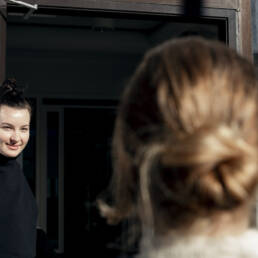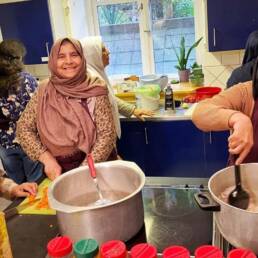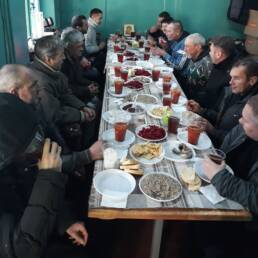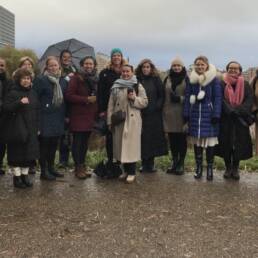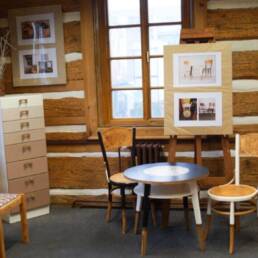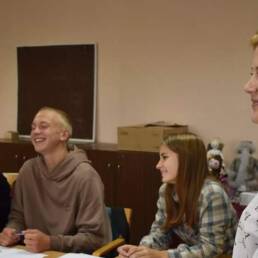Author
Susan Dabbous
Media Officer
Caritas Europa
In 2021, the Caritas Medical Centre in Rome received and treated 2,400 people: men and women from over a hundred different nationalities, including many Italians.
When Stefy found out she only had a few months to live because of breast cancer, she decided to do two things. First, be baptised. Second, marry Juan. “Planning a wedding is not an easy thing in those circumstances,” said her doctor Giulia Civitelli, 37, who is responsible for the largest Caritas Medical Centre in Rome.
I met Giulia one morning in April when spring had made its first hesitant appearance in Rome. I walked along Via Marsala, which runs alongside the city’s main Termini train station, and rang the bell at number 97. It’s a reference point for many homeless people in the Italian capital. For more than twenty years, the Medical Centre in Via Marsala has received and treated thousands of people. 2,400 people were seen in 2021 alone: men and women from over a hundred different nationalities as well as many Italians. The latest figures for 2021 show a 33% increase in medical and diagnostic examinations – evidence of the impact of the Covid pandemic on local residents.
“Stefy was Albanian,” Giulia explained, “and she used to come here for check-ups when she discovered she had breast carcinoma.” Homeless people come to the Centre as well as migrants who need specific examinations. The Centre provides several specialised doctors including dermatologists, psychiatrists and even dentists, but the latter receive their patients in a separate location.

Giulia holds a degree in Medicine specialising in Public Health with a particular attention to migrant’s health and, after a study period in Ethiopia and an experience of voluntary work in Caritas Medical Centre, decided to join the Scalabrinian Secular Missionary order. Giulia’s motivation and vocation fit perfectly. She comes across as an extremely kind and competent doctor; she told me Stefy’s story whilst clutching her phone and showing me the embroidered wedding dress that the nuns of the San Giovanni hospital managed to find and adapt in a few days. “What remains in my memory of those days is Juan’s love for a woman who was obviously about to leave this world. She had metastases everywhere.”
During her illness, Stefy, who was of Muslim origin, decided to be baptised and then married to Juan, an Italian-Peruvian and a faithful Catholic, whom she met in a squatted building in the eastern suburbs of Rome. The wedding took place in the chapel of San Giovanni’s Hospital, where she was receiving care at the time. But Stefi’s condition improved immediately after the wedding, allowing her to enjoy married life for a year before she died in 2019.

“Stories like Stefy’s teach us that prevention is essential,” said Salvatore Geraci, Director of the Caritas Rome Medical Centre and Stefy and Juan’s wedding witness. “People come to us with advanced chronic illnesses, knowing that we treat everyone here. But our ambition is to focus on prevention, even among people living in vulnerable conditions.”
The Italian public health system is one of the most accessible in the world, explained Geraci, but many homeless people, refugees and migrants in irregular situations do not know this. Those who live on the margins of society do not think they can go to the general doctor, can access specialistic visits or have a pap test, but in fact they have every right to do so. Caritas Rome does a great job of spreading the word. A few steps from Termini Station, for example, in the market of Piazza Vittorio where many Chinese and Bangladeshi people live, Caritas has had a “health stand’’ for many years.
The idea is that if patients don’t go to Caritas, then Caritas goes to them. The health stand staff use the market’s public address system to inform people of their health rights and how to schedule medical check-ups, which are often entirely free for many. Some call it “street medicine”, but the Caritas staff prefer to describe it as the medicine of proximity. That’s because they see this opening up to others as vital – that “welcoming is part of the cure”, as their own slogan says.

It’s solidarity with those in need that is essential to the work of the Centre. The Medical Centre relies on the voluntary work of over one hundred doctors, most of whom are retired with a significant participation of young doctors completing their specialisation, as well as the contribution made by the pharmacists who distribute medicines funded by donations from organisations and individuals. Without this drive to help others, Caritas Rome Medical Centre would not exist. And the support provided to people like Stefy is an example of care that goes beyond medicine to provide dignity and fulfilment to those in need.



